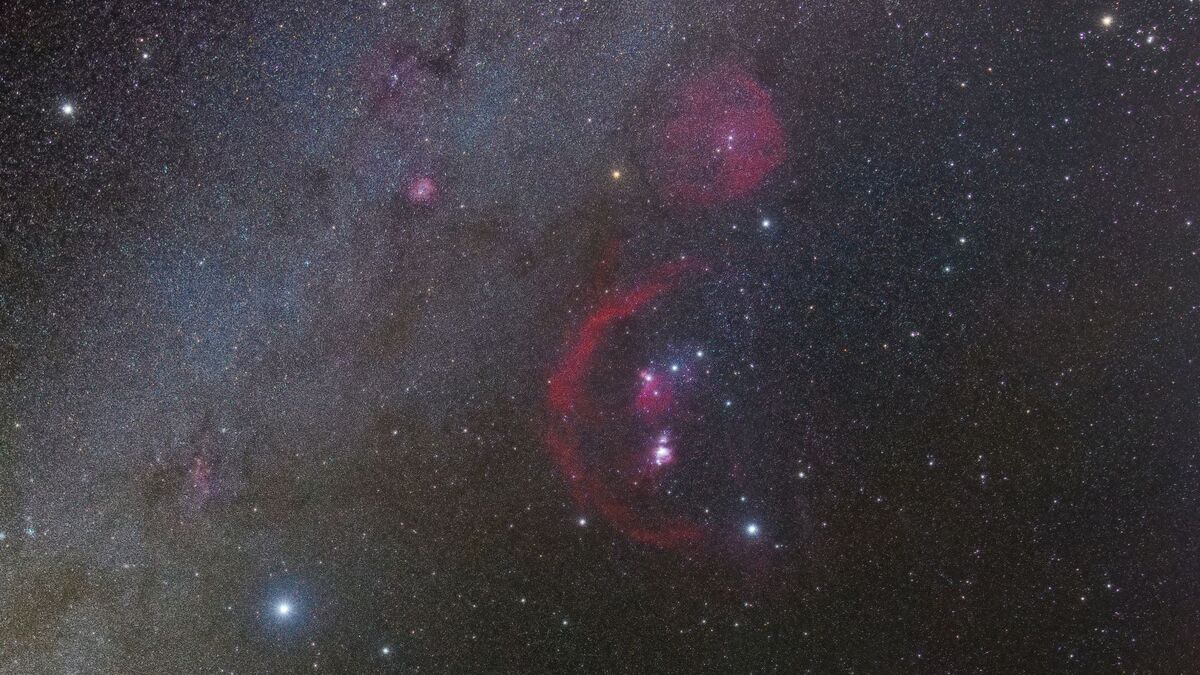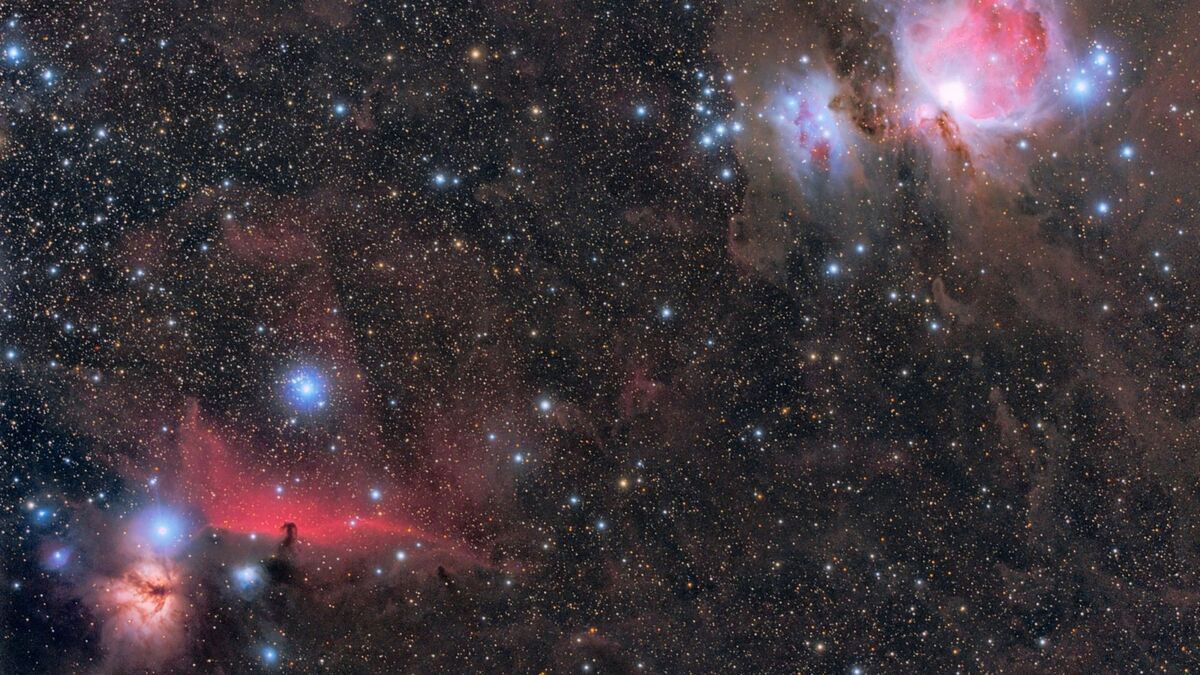Table of contents
What are Nakshatras for Vedic Astrology?

The 27 Nakshatras, also known as constellations of 13'20 degrees each (location referring to the Astrological Chart), were born from the division of the Zodiacs by the ancient sages. Besides being known as constellations, the Nakshatras are also called lunar mansions.
Their existence was first mentioned, in ancient Vedic scriptures, but they are also mentioned in Hindu Mythology. In it, the 27 Nakshatras are known as daughters of King Daksha, in this mythological story the moon is home with all of them.
In today's text, we will talk more about the Nakshatras, bringing information such as: Vedic Astrology, what are the Nakshatras, what do they determine, and what are their uses.
Vedic Astrology, Nakshatras, what they determine and uses

This form of Zodiac brought by the ancient sages has several curiosities and correspondences with the Western signs.
In this article we will talk a little about Vedic and also Indian Astrology, about each of the Nakshatras, what they determine for their natives, and also the utilities brought by the knowledge of these constellations.
Vedic or Indian Astrology
For Hindu mythology, the Nakshatras were created and attributed to Daksha (the name of the leader of the prajapatis, who are lords of prosperity). They were personified as being daughters of the deity and wives of the moon god.
Each of the Nakshatras is ruled by a planet, they are:
Ketu, which corresponds to the South Lunar Node;
Shukra which corresponds to Venus;
Ravi or Surya which corresponds to the Sun;
Chadra which corresponds to the Moon;
Mangala which corresponds to Mars;
Rahy which corresponds to the North Lunar Node;
Guru or Brihaspati which corresponds to Jupiter;
Shani which corresponds to Saturn;
Buddha corresponding to Mercury.
The cycle of the 27 Nakshatras is repeated three times, in order to go through them all. The ruler of each Nakshatra determines its planetary period. This fact is very important for understanding the predictions in each person's life through Hindu astrology.
The word Nakshatra in Vedic Sanskrit can have the meaning of a celestial body or even a star in a collective form. The term lunar mansion was first found in the Atharvaveda (Hinduism's sacred text) and thus becomes the initial meaning of the term in classical Sanskrit.
What are Vedic Astrology Nakshatras
For Vedic Astrology, the Nakshatras are constellations used in the Astrological Chart reading, leading to a clear and precise understanding of the predictions of this reading. This Astrology uses its own system to study the predictions, based on the moon in each constellation (Nakshatra).
The Nakshatras are a total of 27 constellations, each covering 13 degrees and 20 minutes of the Zodiac, which shows their positioning in the natal chart. Each constellation is responsible for a specific group of stars.
Therefore, knowing where the Nakshatra is positioned on one's Moon, will be of great value in understanding important things about one's life. Even this positioning reveals factors about one's unconscious mind, desires and needs.
What Nakshatra determines
To understand the determinations brought by the Nakshatras it is necessary to understand something important, just as the 12 western signs are related to the Sun, the Nakshatras are related to the Moon. The Sun represents the masculine, externalizing energy, while the Moon represents the feminine, internalizing energy.
It is very common in India for people to ask what lunar sign, along with the Nakshatra that person occupies, because the Moon moves very quickly through the Nakshatras.
Thus, two people born only one day apart, having the same Moon sign, may have a different Nakshatra, and thus have different behaviors.
Nakshatras' uses
The usefulness of Nakshatras are most common in Indian Synastries and Muhurta (Elective Astrology). In the case of Synastries, Nakshatras are very important for choosing a partnership that has the potential to work out.
For Elective Astrology, the position of the Moon in a Nakshatra at the time of one's choices will be decisive in the experience one will have with that choice. Nakshatras are also used in another system of predictions, called Krishnamurti, which are made according to the fixed positioning of the stars and their rulerships.
The 28 Nakshatras

The 28 Nakshatras were created in the first millennium B.C. They make up a list that is guided by the Moon Path. 12 constellations were divided into 28 new constellations, which were associated with each day of the lunar month.
In this part of the article, we will talk about each of the Nakshatras and what their general characteristics are, positive and negative, which signs of the Western Zodiac they correspond to, their symbols, meanings, rulers, and the nature of each one.
Ashvini
Ashvini is related to the sign of Aries in the traditional Zodiac. The characteristics brought to its natives are good looks, they are kind, intelligent and skilled at work. The translation of this term is "one who owns horses or riders", it is represented by a horse's head.
Its ruling planet is Ketu, which corresponds to the South Lunar Node, it has a divine nature and is considered a physician of the celestial gods.
As positive characteristics it brings intelligence, self-reliance, dedication to work, great intuition, and an inclination toward spirituality. On the negative side, it brings hasty actions compromising efficiency, impulsiveness, aggressiveness, stubbornness, and arrogance.
Bharani
Bharani is also equivalent to the sign of Aries, and its general characteristics are success at work, being truthful, and being free from sickness and sorrow. The translation of this term means welcome, support, and nurture. The planet that rules Bharani is Venus, and it has a human nature, being known as the god of death.
Its positive characteristics are cleverness, spontaneity, zeal, loyalty to family and friends, courage, leadership, and creativity. On the negative side are overload, restlessness, inconstancy, difficulty in accepting criticism and judgment.
Krittika
Krittika is located between the signs of Aries and Taurus, its general characteristics are determination, tenacity, drive to excel, and somewhat aggressive. The translation for this term is the cutter, its symbol is the axe, and the animal is the female sheep.
He is ruled by the Sun, and has a demonic nature, being known as Agni, the god of fire. His positive characteristics are: he is famous in his group, is attractive, has great self-motivation, determined and focused on his goals.
On the negative side, people with the influence of Nakshatra Krittika have an unstable, changeable, and vacillating mind; they are stubborn, dissatisfied, and impatient. Also, they tend to respond to everything too intensely.
Rohini
Related to the sign of Taurus, Rohini's general characteristics are a strong emphasis on spiritual liberation, being truthful, having no greed, good hygiene habits, sweet in his speech, and firm in his views. The term means The Red One, his symbol is the cart, and the animal is the male serpent.
He is ruled by the Moon, has a human nature, and is known as the creator of the universe. His positive characteristics are: charismatic, good listener, communicative, inner strength, gentle manners, and zealous with his family. On the negative side, he is materialistic, likes to take advantage by manipulating others, is critical, possessive, jealous, and indecisive.
Mrigashīra
Mrigashira is related to the signs Taurus and Gemini, this Nakshatra's general characteristics are spiritual intelligence, research skills, well-developed spirituality, good oratory, and active habits.
This term means deer face, its symbol is the head of an antelope and the animal is the female serpent. Its ruling planet is Mars and its nature is divine, being known as the god of the Moon.
Positive characteristics: individuality, intelligence, leadership, astuteness, curiosity, perceptiveness, sensitivity, and joviality. Negative characteristics: impulsiveness, inconstancy, need for attention, dislike of commitments, discouraged, and unbalanced.
Ardra
This Nakshatra, Ardra, is equivalent to the sign of Gemini, as general characteristics, it brings great mental and thinking capacity, deep feelings that accompany enthusiastic and desire-driven thinking.
Ardra has the meaning in its translation of The Wet One, its symbol is the human head, the animal is a female dog, it is ruled by Rahu which corresponds to the North Lunar Node and has a human nature. Ardra is known as the god of storm and destruction.
As a positive characteristic, Ardra brings to its natives a curious mind, thirst for knowledge, quick-wittedness, and truthfulness, while its negative characteristics are arrogance, abuse of power, greed, ingratitude, recklessness, and stubbornness.
Punarvasu
Another of the Nakshatras is Punarvasu, which corresponds to the signs of Gemini and Cancer, and its general characteristics are intellectual and spiritual wisdom, material prosperity, generous nature, quietness, patience, devotion, and liking comfort.
The translation of the term means again good, Punarvasu's symbol is the bow and a bag of arrows. The animal that represents it is the cat, its ruling planet is Jupiter, it has a divine nature and is known as the goddess of the earth.
The positive characteristics of this Nakshatra are: loving kindness, affection, taste for a simple life, interest in spirituality, and depth. On the negative side, it has lack of intelligence, lack of vision for the future, a fickle nature, and indecision.
Pushya
Pushya is also part of the 27 Nakshatras and corresponds to the sign of Cancer, and has as general characteristics the control of passions, knowledge of various subjects, is prosperous and charitable.
The meaning of this term is to provide nutrition, its symbol is a cow, a flower, a circle and an arrow, the animal is the ram, it is ruled by Saturn, it has a divine nature and is known as the god of sacred speech and prayer.
Positive characteristics: hardworking, creative, pain tolerant, intelligent, and spiritual. Negative characteristics: stubbornness, selfishness, arrogance, fundamentalism, doesn't believe in his own value, and trusts the wrong people.
Āshleshā
Ashlesha corresponds to the sign of Cancer and its general characteristics are: motivated by Dharma (spiritual elevation) and represents the fire serpent. The meaning of this term is the interlacing or embracing, its symbol is the coiled snake, the animal is the cat, it has a demonic nature, and its ruler is Mercury.
Positive characteristics brought by this Nakshatra are: intelligence, versatility, cleverness, independence, and studiousness, while the negative characteristics are: mental instability, lack of tact, unpopularity, stinginess, meanness, possessiveness, and thoughtlessness.
Maghā
Nakshatra Magha corresponds to the sign of Leo, its general characteristics are inclination to worship gods and ancestors and engagement in important work. The translation of this term means the great mighty one, its symbol is the royal throne, the animal is the male rat, it is ruled by Ketu (South Lunar Node) and its nature is demonic. It is known as the guardian angel of calamities.
His characteristics are clarity, intelligence, balance, respect, kindness, and he is trustworthy. On the negative side, he brings the following characteristics: arrogance, prejudice, envy, resentment, being too demanding, and cruelty.
Pūrva Phalgunī
Another element of the Nakshatras is Purva Phalguni which corresponds to the sign of Leo and its general characteristics are sweet speech, generosity, and governmental services. The meaning of the term is the fig tree, its symbol is a swinging net, its animal is the female mouse, the ruling planet is Venus, its nature is human, and it is known as the god of prosperity.
Purva Phalguni's positive characteristics are creativity, intelligence, charm, sincerity, leadership, focus on the body, and open-mindedness. Her negative characteristics are vanity, impulsive mind, promiscuous nature, narcissism, and recklessness.
Uttara Phalgunī
Uttara Phalguni corresponds to the sign of Virgo, his general characteristics are emphasis on healing others, profit from learning, well-liked by all, and lives a life of comfort and luxury. The translation for this term is the second red, his symbol is a bed, his animal is the bull, his ruler is the Sun, his nature is human, and he is known as the one who commands society.
His positive characteristics are popularity, ambition, good communication, reliability, focus, and balanced leadership, while his negative characteristics are promiscuity, selfishness, restlessness, thoughtlessness, and stubbornness.
Hasta
In the list of Nakshatras is also the Hasta, which corresponds to the sign of Virgo, its general characteristics are: purity of thoughts, self-control, active habits, and many resources. The translation of the term is the hand, its symbol is a hand, the animal is the buffalo, its ruler is the Moon, it has a divine nature and is known as the Sun god.
Its positive characteristics are: creativity, charm, practicality, generosity, detachment, intelligence, power of persuasion, and cordiality. Negative characteristics are: restlessness, cheating, self-interested, emotional instability, need for control, and unreliable.
Chitra
Among the 27 Nakshatras is also Chitra, who corresponds to the signs of Virgo and Libra. His general characteristics are: he is attractive, sociable, intelligent, and a natural leader. The translation of this term means the brilliant one, his symbol is a shining light, the animal is a tigress, his ruler is Mars, his nature is demonic, and he is known as the celestial architect of the universe.
Its positive characteristics are independence, leadership, perception, high spirits, elegance, and dignity. Negative characteristics are focused on presumption, conceit, criticism, corruption, and lack of focus to save money.
Swati
Swati is equivalent to the sign of Libra, and its general characteristics are softness, virtuousness, quiet nature, control of passions and desires, and charity. The translation of this term is the priest, the symbol is the coral, the animal is the male buffalo, its ruling planet is Rahu, its nature is divine, and it is known as the semi god of the wind.
Among his positive characteristics are morality, business ability, commercial acumen, studious, gentle, truthful, and humanitarian. His negative characteristics include not knowing his limits, restlessness, judgment, lack of care for his family, and shyness.
Vishakha
Vishakha is related to the signs of Libra and Scorpio, and its general characteristics are: energy, strength, power, good looks, distinctive speech, and the ability to make money. Its translation means enter the sky, and its symbols are a large tree, a pottery wheel, and a decorated portal.
His animal is the male tiger, his ruling planet is Jupiter, his nature is demonic and he is known as Indra, the god of transformation and Agni, the god of fire.
His positive traits are intelligence, radiant appearance, cleverness, entrepreneurship, determination, and truthfulness. His negative points are: excessive talk, negativity, quarrelsomeness, envy, unfaithfulness, and excessive ambition.
Anuradha
Another of the 27 Nakshatras is Anuradha, who corresponds to the sign of Scorpio, and as general characteristics he brings wealth, life in a foreign country, inability to endure hunger, and ease of movement.
The translation for this term is little flash of light, its symbol is the lotus flower, the animal is the female deer or hare, it is ruled by Saturn, has a divine nature, and is known as the god of friendship and partnership.
Its positive characteristics are: wisdom, spirituality, spirituality-seeking, hardworking, dedication, and cooperation with others. Its negative characteristics are: brutality, neediness, rebelliousness, jealousy, controlling, and following bad advice.
Jyestha
In the list of the 27 Nakshatra is also Jyestha, which is equivalent to the sign of Scorpio and its general characteristics are: mental ability, analytical ability, few friends, lively and virtuous.
Its translation means older sister, its symbol is the talisman of protection, its ruling planet is Mercury, the animal is the male deer or hare, its nature is demonic and it is known as the king of the gods.
Positive characteristics: successful, can keep friends, generous, self-sufficient, and virtuous. Negative characteristics: angry, selfish, passive behavior to disguise impatience and immorality, conniving, and hypocrisy.
Mule
Mule is the Nakshatra that corresponds to the sign of Sagittarius, its general characteristics are: deep philosophical nature, inquisitive mind, arrogant attitude, wealth, happiness, firm opinions and luxurious life. Its translation is root, its symbol is a bundle of tied roots, the animal is the dog, its ruling planet is Ketu, it has a demonic nature and is known as the goddess of destruction.
His positive characteristics are: beauty, persuasive ability, cleverness, lucky, determined to succeed, studied, and generous. Negative characteristics are: insecurity, excessive focus on goals, arrogance, and a tendency toward self-destruction.
Purva Ashadha
Purva Ashadha corresponds to the sign of Sagittarius, his general characteristics are: pleasant husband, proud nature, and strong attachment to friends. The translation for this term is the unbeatable, his symbol is a bed, the animal is the male monkey, his ruler is the planet Venus, he has a human nature, and is known as the representative of cosmic waters.
The positive characteristics brought by this Nakshatra are: beauty, influence, gift for the arts, education, loyalty to friends, intelligence, and humility. Its negative characteristics are: selfishness, inflexibility, superiority complex, rudeness, and immaturity.
Uttara Ashadha
Uttara Ashadha is equivalent to the signs of Sagittarius and Capricorn, its general characteristics are: search for spiritual knowledge, involvement in activities, obedience, virtuous, grateful, has many friends, and is very loved.
The translation of this term means subsequent victory, its symbol is the elephant tusk, the animal is the male mongoose (of the meerkat family), it is ruled by the Sun, has human nature, and is known as the son of the god Dharma.
Positive characteristics: intelligence, fun-loving, leadership quality, dedication to friendships, gratitude, kind and modest. Negative characteristics are: too many relationships, excessive anxiety, excessive stress for others, stubbornness, apathy, and doesn't finish what he starts.
Sravana
Among the Nakshatras is Sravana, which corresponds to the sign of Capricorn, its general characteristics are prosperity, knowledge, riches, and fame. The translation of this term is hearing, its symbol is an ear, the animal is the female monkey, its ruler is the Moon, it has a divine nature, and is known as the keeper of the universe.
Its positive characteristics are: cordiality in business, success in foreign lands, prosperity, ethics, kindness, and good oratory. Negative characteristics: propensity to debt and poverty, inflexible nature, extremism, hypersensitivity, and envy.
Dhanishta
Dhanishta is another of the Nakshatras and is equivalent to the signs of Capricorn and Aquarius, its generals are: liberal person, wealth, bravery, taste for music, generosity, and jovial appearance. The translation of the term means complete wealth, its symbol is a drum, the animal is the lioness, the ruling planet is Mars, it has a demonic nature, and is known as the solar god of energy and light.
The characteristics brought by Dhanishta are: insight, perception, charity, bravery, liberal, compassionate, and organization. His negative characteristics are: aggressiveness, cruelty, disregard, lies, talks too much, and wants everything for himself.
Shatabhisha
Shatabhisha corresponds to the signs of Aquarius and Pisces, its general characteristics are: intelligence, intuition, solitude, and shyness. The translation of this term is one hundred doctors, its symbol is the empty circle, its ruling planet is Rahu, and it is known as the god of heaven and earth.
Their positive characteristics are: intelligence, intuition, mysterious, self-centered, altruistic, and search for inner truth. Negative characteristics: they like seclusion, suspicious, aggressive, and lonely.
Purva Bhadrapada
Still in this list of 27 Nakshatras is Purva Bhadrapada, which also corresponds to the signs of Aquarius and Pisces, its general characteristics are: concentration on studies, intelligence, ability to make money, helpfulness, and devotion. The translation for this term is ray of light, its symbol is a sword, the animal is the lion, ruling planet Jupiter, human nature, and it is known as the unicorn.
His positive characteristics are devotion, taste for studies, intellectuality, logical abilities, prosperity, cleverness, and kindness. Negative characteristics are cynicism, impulsiveness, no ability to plan, greedy, and anxious.
Uttara Bhādrapadā
Uttara Bhadrapada is Nakshatra corresponding to the sign of Pisces, its general characteristics are: happiness, good oratory, affectionate with children, have the ability to overcome the enemy, and are virtuous. The translation of this term is ray of light, its symbol is the two legs on the back of the bed, the animal is the cow, its ruler is Saturn, it has a human nature, and is known as the serpent of the deep sea.
Positive characteristics of Uttara Bhadrapada are: problem solving ability, discipline, kindness, compassionate, generosity, and charitable. Negative characteristics are: lack of enthusiasm, has many enemies, laziness, vices, and irresponsibility.
Revati
This Nakshatra is equivalent to the sign of Pisces, Revati's general characteristics are: physical perfection, genial manners, deep learning capacity, and absence of greed. The meaning of this term is rich, its symbol is a drum, the animal is the female elephant, its ruler is Ketu, it has a divine nature and is known as the protector of the flocks.
Its positive characteristics are: creative thinking, independence, luck, talented, welcoming, brave, and sociable, while its negative characteristics are: revenge, amoral attitudes, feelings of inadequacy, and low self-esteem.
Abhijit
This is the 28th of the Nakshatras, which is no longer used in Jyotish Astrology and is now only considered spiritually. It corresponds to the sign of Capricorn, but there are studies that understand that Abhijit is present in all signs, in the 4th house from the placement of the Sun.
Therefore, to understand in which sign this Nakshatra is in relation to your Birth Chart, one must count 4 houses from where the Sun appears. This is because according to studies, Abhijit is the point of maximum light.
Is there an equivalence between the Nakshatras and the signs of the zodiac?

The Nakshatras correspond to the signs of the Western Zodiac, and several Nakshatras can be related to the same sign. Even the characteristics that the natives of a particular Nakshatra receive, are also very similar to the characteristics of the Western signs.
Besides the characteristics, there are other similarities between the two zodiacs, for example, the planets that rule the Nakshatras are equivalent to those that rule the western signs. In this text we have tried to bring as much information about the Nakshatras as possible, and hope to have helped you understand them.

